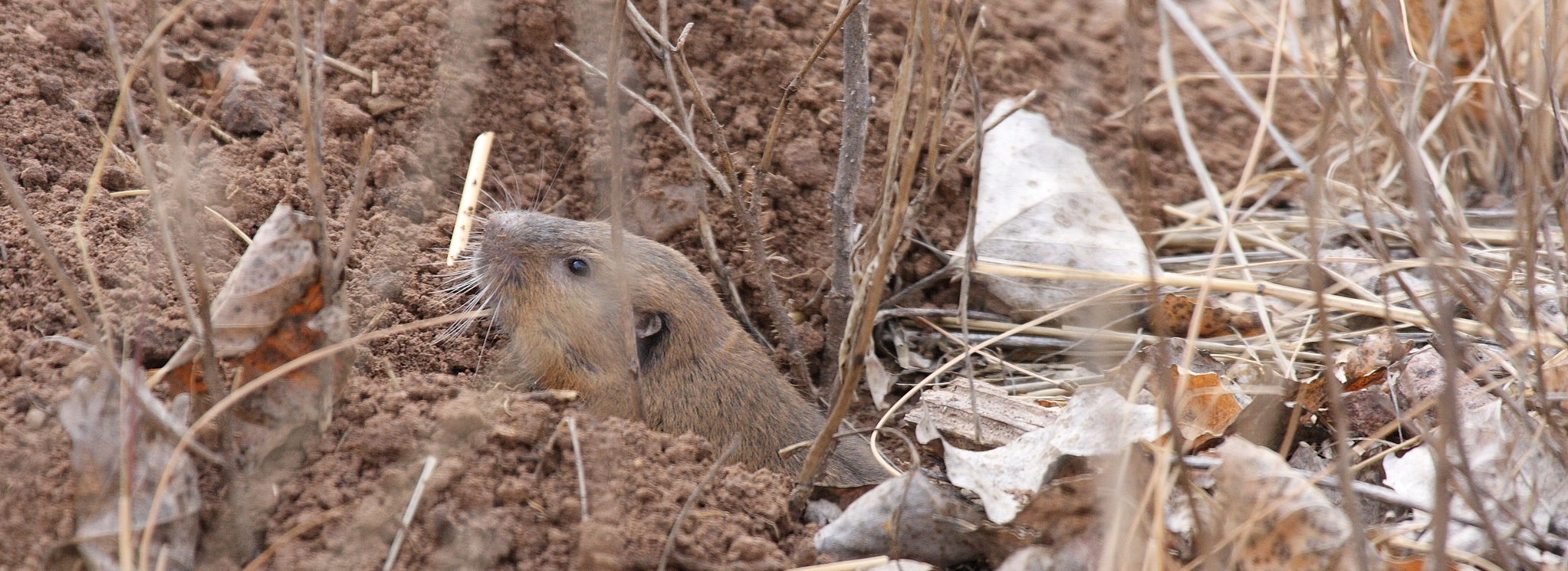Reproduction
While the pocket gopher is monstrous and only breeds once a year, they do not usually have discrete breeding seasons (Animal Diversity Web: Thomomys bottae 2014). In fact, in places where food is abundant, like farm fields, the breeding season can span the entire year (Jones and Baxter 2004). However, they sometimes do prefer to mate in the spring, summer, or late fall/early winter (Animal Diversity Web: Thomomys bottae 2014).
The females will gestate for 19 days before giving birth to a litter of between three and seven young (Animal Diversity Web: Thomomys bottae 2014). Older females have been known to give birth to up to two litters of five young a year, but the younger females have lower fecundity (The Mammals of Texas 2014). After a surprisingly short period of labor of approximately 30 minutes (Jones and Baxter 2004), the young are born naked, blind, and deaf (Animal Diversity Web: Thomomys bottae 2014). However, being true to their name, their cheek pockets are fully formed at birth (The Mammals of Texas 2014), but do not open until they are 24 days old (Animal Diversity Web: Thomomys bottae 2014). At birth, the young weigh between 2.8g and 4g (Animal Diversity Web: Thomomys bottae 2014). After reaching their first developmental milestone at 24 days (when their cheek pouches open), the next is when their eyes and ears open on their 26th day (Animal Diversity Web: Thomomys bottae 2014). Their last milestone is when their mothers wean them somewhere around 36 or 40 days of age (Animal Diversity Web: Thomomys bottae 2014). Finally, the young will leave their mothers around their 60th day (Animal Diversity Web: Thomomys bottae 2014). However, they will not acquire their adult coat until 100 days of age, and only reach adult weight between 5 and 6 months (Animal Diversity Web: Thomomys bottae 2014). The following breeding season, these little guys will be ready to mate at only 9 to 12 months of age and will continue to do so annually for the rest of their lives, which is usually around two and a half years (Animal Diversity Web: Thomomys bottae 2014). By the time these critters are at full adult size, there is considerable sexual dimorphism between the two sexes (Animal Diversity Web: Thomomys bottae 2014).
When ready to mate, both males and females will be between 11.5cm and 30cm in length, but on average the males will weigh much more than the females (Animal Diversity Web: Thomomys bottae 2014). In fact, the average weight for a mature male is 141g, while the average mature weight for a female was only 90g (Animal Diversity Web: Thomomys bottae 2014).
Allelic Diversity between Populations
While most pocket gophers only end up migrating approximately 40m from their birth burrow, there are some immigrant pocket gophers from distant populations that move into the area, contributing to the established population’s gene pool (Daly and Patton 1990). These disturbed populations have been studied by Joanne Daly and J.L. Patton (1990) in order to understand what effect they have on the allelic diversity of the established population. They found that while gene flow was very unlikely in isolated populations of Thomomys bottae in the mountains, those populations along the coast of California that were less isolated had a much bigger chance of being influenced by gene flow (Daly and Patton 1990). However, they did find that even though gene flow occurred in these populations, higher portion of females in the population in conjunction with the variable success of mating males keeps gene flow from depleting the allelic diversity of the established population (Daly and Patton 1990). This means that the “heterozygocity” of the coastal California pocket gopher populations is very high, allowing for a very diverse and healthy gene pool (Daly and Patton 1990).
